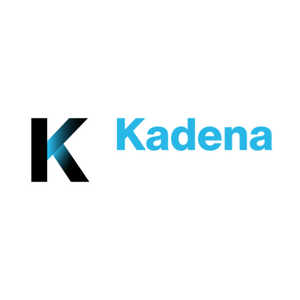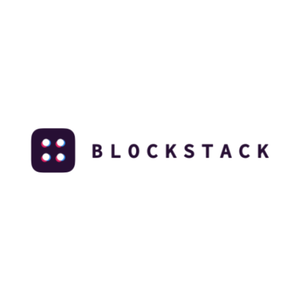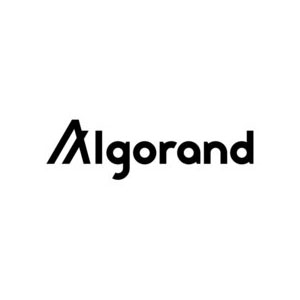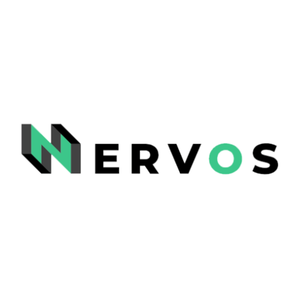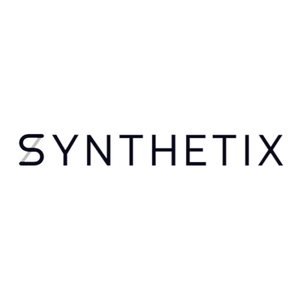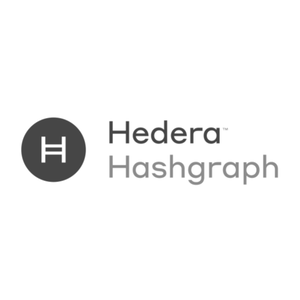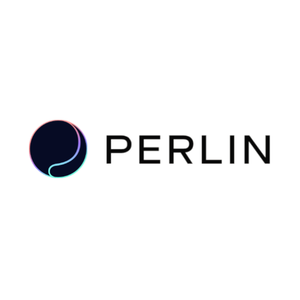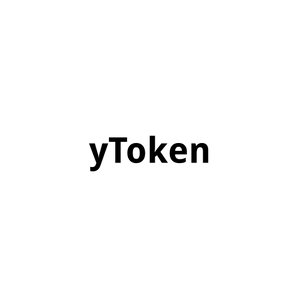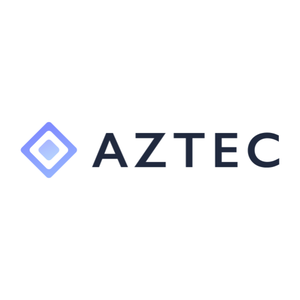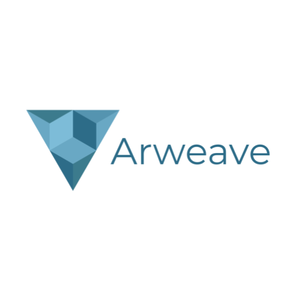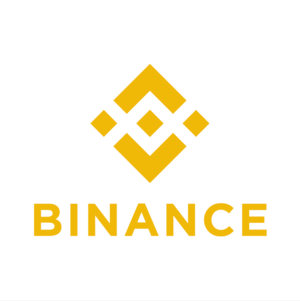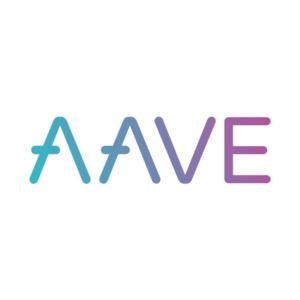Crypto AMA with Livepeer (1.24.19)
Spencer Noon Feb 9, 2020
- Doug Petkanics
Alrighty let's do this. Happy Friday everyone.
Let’s give a warm welcome to Doug Petkanics (founder) of Livepeer!
As a reminder for everyone participating — please keep the discussion respectful at all times.
Doug — could you start off by giving us a brief bio on your background as well as how you got started in crypto? And then a short overview of Livepeer and a brief update on your progress to date? We’ll then be off to the races with questions.
Hello everybody! Thanks for joining. Excited to be here for the next 90 minutes.
Thanks Spencer for hosting. My background is in traditional computer science, software engineering, and general hackery. I studied CS at UPenn, and after a couple of years working on large software engineering projects, I joined a YC startup right before going through the program in 2008. Since then I founded and lead engineering at two startups - one successful data infrastructure startup which was acquired by Groupon, and one not-successful mobile startup with some prominent video features. My co-founder at Livepeer, Eric, was also with us on those two startups so we’ve been working together for 11 years now, and when we were exploring what was interesting to us in 2016, we both caught the blockchain virus inspired by web3 and ethereum as an open development platform - and spent 6 months learning, meeting people in the space, and building open source projects (including the pre-cursor to ERC-721 - nonfungible tokens) - before deciding to dive in and build Livepeer....
To give a brief overview of Livepeer, our mission is to build the world’s open video infrastructure. Building video applications like Youtube or Twitch is difficult, expensive, and require building on proprietary software and platforms. Via the Livepeer protocol, anyone with excess video encoding compute power (such as GPU miners - more on this later), can earn additional revenue by transcoding video, while developers can build applications and transcode video at a 10-50x price reduction over what they would have to pay on public clouds. The Livepeer protocol went live in April 2018, and initial token was distributed via an algorithm we designed called The MerkleMine. Since then, protocol participants have earned token by running infrastructure or staking on the network, and users have used the alpha platform to stream live events. We recently released a major update called Streamflow, which takes the *functional* alpha platform, and makes it scalable, reliable, and cost effective on Ethereum - which will enabled scaled usage of the underlying platform for thousands of concurrent video streams.
Livepeer is a little bit complex as it touches not only the blockchain world, but also the video world. The best place to spend 10 minutes learning about it is our user friendly primer - http://livepeer.org/primer
So that’s me, that’s Livepeer, and that’s what’s been happening lately. I’m Doug Petkanics. ASK ME ANYTHING.
Haha this is great. Thanks a lot for the introduction. Everyone feel free to ask away!
Who are your ideal customers?
+1, and maybe you could expand on your GTM in general?
The word "customers" is interesting, and if definitely applies to the company Livepeer Inc. So I'll talk about customers first. But note that users of the Livepeer protocol and network may be "users" moreso than customers. So to answer your question though...
The ideal customer for Livepeer is a Video Streaming Platform. Think Brightcove, or Vimeo, or Wowza, or Mux, or Telestream for example. These are existing video industry companies that power video for hundreds of thousands of customers of their own. They have many concurrent streams of video flowing through their own platforms. And hence they have very high operational costs to keep these streams running reliably, at high quality. Livepeer can dramatically reduce those costs and operational burden, and let them scale to infinite capacity (on the compute/processing side), without having to add additional human or infrastructure resources.
And so describe Livepeer Inc's go to market, it's to work with some of these VSP's (smaller ones at first), to identify end users of theirs that could benefit from Livepeer, and to do sponsored offerings to run pilots and create successful case studies about the cost savings that result. Using those case studies and VSP inroads, we can expand our offering within their businesses and attract new business as well. All of which drives demand and fees to the Livepeer network. Finally, a word on "end users" of the Livepeer network....
If the VSP's represent the fastest path to scaled adoption, it's worth asking who the end users are that really benefit from Livepeer. It's streaming applications that have many streams of content - things like Twitch that have 60,000 concurrent streams. Things like web cam providers like nature cams, surf cams, ski cams etc that have 100+ concurrent streams. In a traditional infrastructure like AWS, they may have to add 1 new server to transcode every 2 or 3 streams (if they'd like to offer HD streaming). In a Livepeer world, one server needs to be added for every ~50 streams, as most of the work is outsourced to the Livepeer network. So all the sudden the big streaming applications can reduce costs dramatically. And startups looking to build new or innovative versions of streaming apps can actually affordably do so and deliver good experiences without bankrupting themselves on infrastructure costs.
Got it. So how does the protocol work at a high level with protocol participants, end users, VSPs, etc.?
/END WALL OF TEXT. Next question 🙂
First, the supply side of the protocol: Who's providing all this video encoding capacity....
Anyone who wants to earn revenue for using their excess compute capacity to encode video can stake Livepeer token (in the Ethereum protocol smart contracts) to enter the active set. This stake secures their work, as it can be slashed if they act maliciously....
Any token holder can also stake towards these nodes to add more security. And in return the nodes advertise a % of the fees and rewards they earn that they'll share back towards the token holders who staked. You can view the list of active nodes at explorer.livepeer.org ...
On the demand side, if someone wants to use this network for transcoding, they will make an ETH deposit to pay fees to use the network. Their node will look at this list of registered nodes, negotiate price with them, test them for performance, and begin routing video towards them in rough proportion to how much stake they have....
Who do you think the first commercial users of the platform will be? How much do you think they will pay the network for transcoding?
Which each segment of video sent to be transcoded, a probabilistic micropayment is sent to the node who's performing the work. As long as the video isn't malicously misencoded and the transcoded outputs are returned fast enough, the relaitonship continues. If the nodes cheat and misencode the video, they can be slashed by the protocol.
There are all sorts of interesting complexities related to the economics of the protocol - token rewards in LPT vs fees in ETH. The inflation rate that changes each day. But in short the protocol creates an active set of workers who advertise and secure their service. It settles payments. Validates work. And enables a marketplace for matching the demand with the supply. The client software, which is basically an open source video media server that we wrote called LPMS, along with p2p networking, does all the video heavy lifting.
This is a bit more of a video question, but what happens after broadcasters get back the transcoded video? What do they need to do to actually stream the videos? Send the transcoded videos to their CDN?
I belive it will be a Video Streaming Platform (VSP) that is running a pilot with one of their customers with 100-500 concurrent streams, and paying the network something on the order of $0.05-$0.10/stream. This is disruptive relative to the $3 they may pay a SaaS platform of $0.50+ they may pay to DIY on a cloud, but still has room to go a lot lower.
I guess I ask because transcoding is only 1 piece of actually streaming video (though obviously an important and costly piece).
It's more likely early usage will come in step functions from onboarding these real commercial pilots at scale, than just slowly organically growing from independent developers building new apps that do one or two streams at a time.
Hey! Thanks for doing this. What is the monetary policy of LPT and does the token capture value?
That is correct. The Livepeer transcoding network just transcodes and doesn't deliver content on a broad scale. It's meant to be a pluggable piece that fits into existing video workflows (which have many different components including ingest, ad insertion, analytics, CDN, transcoding, etc). So the user would get the video back and then deliver it to their users however they want. This also is part of the reason why a VSP first strategy makes sense - the VSPs offer all those bells and whistles that have nothing to do with the core disruptive value prop of Livepeer. But they're big challenge and cost in infrastructure is scaling transcoding. So we can make it easy to adopt Livepeer without blowing up their whole stack, and solve a big pain point.
Under our mission to build an open video infrastructure, we have some strong theses on p2p content delivery as well that we'd like to tackle, but it's a very different problem
The monetary policy of LPT is built around encouraging participation in the network. There is a target participation rate of 50% - ie 50% of LPT should be staked and participating. Each day that the rate was lower than this, the inflation rate went up, meaning more new LPT each day to those who stake. This encouraged a very active set of stakers and network participants who cared a lot about the network and accrued all the new token each day, while those who were purely speculating with the token and sitting on the sidelines without participating, got dilluted.
In reality, despite there being an initial distribution algorithm called the Merklemine, the token distribution is playing out over a ~3 year period through this inflationary policy - with those who participate in the network building up their ownership stakes
Those who participate efficiently also should expect to earn a proportional share of fees that flow through the network in ETH.
Hi LivePeer team. Thanks for doing the AMA. Is the protocol censorship resistant?
But this requires active attention and work, through the form of infrastructure operation, or quality assurance through delegation.
Any competitors? Strange to be the only project pursuing this opportunity.
The underlying protocol is open access as the video segments are just treated as bits over the wire, just like the core internet protocols like TCP...that said, as mentioned before, there are many components in the video stack and Livepeer is just one piece of that stack. The applications that serve as the points of access have their own questions and responsibilities in terms of their approach to censorship resistance. And even within Livepeer, node operators have their own take and policies on what work they want to service.
Can you talk about the network/token defensibility? What stops other networks from coming in and forking this to provide the same type of service?
I think protocols at the technical layer shouldn't descriminate between bits and use cases, but we also need to be responsible to make sure tools and processes can exist to let individuals who opt into participating in networks have control over what their resources are being used to service.
Hey 👋🏻 thanks for doing this! Two questions:
1) What is the biggest difference between streamflow v1 and v2?
2) What future upgrades are a priority to implement?
Hey Doug - thanks for all the insights here. How much of your early adopters on the demand side are from crypto?
There are a lot of projects working on things that may look different on the surface, but may collide or intersect in the future...
First there's the video specific projects - Theta, Videocoin, Props - these seem to be focused either on the user economies (different problem), or taking a full stack infrastructure approach tackling CDN, ingest, encoding, etc (a lot to focus on a build, and more end-user driven path to market as a full stack streaming platform)...
Have there been negative effects of such a high inflation rate?
Great question!
Then there's the generic compute platforms or vertical specific compute platforms: Golem, Render token, IExec. These aim to be either generic AWS replacements or specific compute platforms for something like 3d rendering...
If you look at Livepeer generically, the protocol allows you to list, advertise, and secure your compute for an known algorithm (CPU transcoding, GPU transcoding, H264 codec, etc), and then to perform that work, get paid, and verify you did it correctly. Zooming out you could see how Livepeer could be used to facilitate other algorithsm on streaming data as well, such as image recognition, deep fake detection or generation, closed captioning and subtitle generation, etc...and so this looks like a similar space to some of the generic p2p compute platforms.
Love it, great answer!
Ok, first I'll take on the high inflation question then Nicolas' questions about Streamflow...
There have not been any seriously negative effects that would seem to matter in the long term. The biggest negative effect is just confusion about what it means. This rears its head in two places...
1) People see that they can earn a 137% return and think this means 137% more money. This is probably not what it means. You'd actually expect each token to be worth less as so many more are being created. Hence people SHOULD be thinking about their increase in total network ownership percentage, and what the network as a whole could be worth in the future. IE I own 1% of the network today, and in a year I'll own 1.3% of the network.
2) Taxes. I don't really want to talk about this one very much, but there's no guidance for what tax treatment should be on a highly inflationary protocol, and you can imagine if it appears tons of tokens are appearing to accrue in income, then that needs to be reconciled somehow. The extreme example is that if there were 10 tokens on a network worth $1 each for a total network value of $10, and then the next day all the sudden the protocol minted 1,000,000 new token to you...it is unlikely that you really just had $1M of income.
The protocol V1 (what I'll call the alpha) was functional but not necessarily scalable, reliable, or cost effective. It incurred too many costs for using the blockchain for payment settlement (in the form of gas), and routed work to only one node on the network who would kill you reliability if they went offline. This was great as a proof of concept to iterate on, and enabled streaming of many single events, but wouldn't provide a big impact at scale...
How does Livepeer Inc. make money?
As in what do Series A investors own? Livepeer Inc. equity? Any LPT?
The Streamflow release (V2) addreses all these issues. We built probabilistic micropayments to scale the payments. (This is really cool, you basically pay by issuing lottery tickets, and nodes get paid when they win the lottery). We moved job assignment and negotiation offchain into the client so that you can fail over between providers on the network seamlessly, use redundancy, and guarantee very high reliability to satisfy enterprise use. And we scaled the protocol to move well beyond the small 25 node set, to up to 100 currently and beyond. We also unlocked GPU based transcoding, and enabled cryptocurrency miners to dual mine crypto while concurrently transcoding video on Livepeer. As such we have over 50,000 GPUs enabled to serve transcoding on Livepeer should there be demand.
"enabled cryptocurrency miners to dual mine crypto while concurrently transcoding video on Livepeer." - can you talk more about this please? What is the performance impact on a GPU miner when they dual mine?
The scaled early targets on the demand side are not from the crypto world, they're from the video world. There are a few crypto enabled video platforms that we'd love to work with like DLive + Props. But we haven't seen crypto or decentralized applications reach scale in the video world yet, and Livepeer provides a value prop to those operating at scale. So I'm excited to see what product visionaries build using web3, Ethereum, decentralized storage, and decentralized compute platforms like Livepeer that actually strikes a chord with consumers and grows to scale.
This is really cool (maybe the coolest part of Livepeer)....
Agreed!
It's what enables the deep cost savings.
So GPUs have 100's of chips called CUDA cores. They can do general purpose compute, and are used to hash cryptocurrencies like Ethereum, Zcash, Grin, etc. Miners are using them at 100% capacity
But GPU's also have video encoding/decoding ASICS. These CAN NOT hash cryptocurrency. On miners they just sit there doing nothing.
The Livepeer software can route video encoding jobs to these ASICS without heavily disrupting the hashing. So they can do both at the same time. They may lose 10%-20% hashing performance while encoding video at full force, but just to put the economics of this into perspective...
Awesome, thanks!
The miners hope to make $1.50/day on the hashing. A transcoding job may cost $3/hr for a livestream on a SaaS service or $0.50/hr DIY...So for a cost of only about $0.70/day in bandwidth and electricity a miner can encode two concurrent streams while still hashing and making that income....
That means they can charge only a couple cents/hour, which is a huge disruption to the $3/hr customers are use to paying, and still make extra income on top of their hashing. This is what makes it a no brainer for cryptocurrency miners to be willing to do both, and why there are so many GPUs standing by ready to encode on Livepeer. now we just need to collectively bring the demand 🙂
Thanks Doug, what's the focus of livepeer now? going after developers? protocol upgrades? biz dev connections?
Proving adoption. Its generating those first successful commercial proof points that this network can deliver the impact that is promised via the above.
thanks Doug
The challenges are
1) productization and reliability - just to make sure this can reliably work on a decentralized infrastructure for an enterprise user.
2) the BD process to work through demonstrations, tests, pilots, commercial agreements
Bumping this since I don't think you addressed it. I'm also wondering about the core value prop of having a token, especially bc it seems like most of the ideal use cases for Livepeer don't involve crypto
But I'm super encouraged by the recent launch of Streamflow. It's working really really well considering its the first release of the new client software. we'll have to iterate on the client side a lot to iron out any bugs, solve reliability issues, build services on top, etc...but we're in a much better starting place than we perhaps expected (just having years of iterative software development experience)
Sure....
1. The token provides economic security against the work that's being performed. It can be slashed if the work is misperformed. It also represents the right to compete to do X% of work on the network. As this is tuned via the economic policy of the protocol itself, this would be impossible if the underlying security were provided via an asset like ETH...
2. It also serves as an alignment and coordination point. This is the same as any project - the holders who have staked on the network (with an unbonding period that keeps the token locked) are incentivized the help the project achieve success.
3. A forked copy of the Livepeer network could certainly offer the same functionality, but wouldn't be able to offer the same economic security, and wouldn't benefit from the network effects of those looking to drive work into the original Livepeer network. (This is TBD, we've still seen that despite many stakeholders who are very helpful on the crypto side and supply side, there hasn't been a tremendous amount of stakeholder contribution on the demand side outside of Livepeer Inc)
The network effect is further enhanced by additional compute services being available on THE original LP network. Should nodes advertise image recognition, metadata tagging on streams, machine learning on the video, etc...the more composable services offered on the main network, the less likely a forked version would be able to compete. And finally...
4. Geographic global footprint - video benefits tremendously from proximity on the internet when it comes to latency and reliability. If the main network has GPUs availalbe to transcode at high capacities at any region in the world, this is a huge advantage over a forked network that only has compute available in a single data center.
Related to many use cases not involving crypto...
Awesome, thanks. I too am excited to see livepeer continue to grow.
Looking at people working at YouTube or Vimeo, they have a strong engineering culture but are definitely heavier in bus dev/sales/partnership/marketing skillsets. Are these roles that you think are needed for your team to push through its mission? How do you see the Livepeer team evolving in the future?
Yes, fees are paid in ETH today but hopefully in a stablecoin in the future. The buyers are going to want to pay fiat, as they're from the video world. So this is an example of a service that Livepeer Inc or others can provide. Payment gateways that abstract the crypto. While the supply side cares deeply about the crypto for the coordination, open access, easily settled payments, incentives, etc.
Yes, we have added a great head of BD to the team (formerly leading business at a large VSP). We'll publicize it more in conjuction with a go to market and first successful commercial pilot. But yes, this sort of thing will be critical to driving early adoption to the Livepeer network. Video is complex - it's not an "if you build it they will come" sort of thing, especially at scale.
Livepeer Inc has token exposure (so is aligned with the network) and plans to make money building commercial products and services that enterprises need in order to adopt Livepeer. We think of it in the same way as Coinbase being great for Bitcoin and Bitcoin being great for Coinbase.
Good stuff, thanks Doug. 15-minute warning folks - get your questions in!
Anyone have any inspirational product visions for what could be enabled in the video streaming world via web3? People just talk about decentralized Youtube or decentralized Twitch, but I think we need to think bigger and different.
(Disclaimer - Livepeer is not building this sort of thing. But we'd love to support entpreneurs or developers who want to build this sort of thing on Livepeer)
Well...here's one...
Crypto enabled video moderation platform. Anyone in the world can serve as "moderator" to watch Livestreams for social applications and flag/moderate content. Payments to the moderators can be settled in crypto, so it can be open access and can unlock earning opportunity for anyone in the world with a mobile phone.
This is a great one.
Do you have a favorite web3 video storage provider?
Especially for someone trying to build a decentralized YouTube (i.e. global scale)
Still waiting for the right upload-and-disappear storage protocol to emerge. *crosses fingers for Filecoin*
Anything that’s actually live?
Arweave has a great platform but recognizes the cost of permanence, and hence storing video would likely be cost-prohibitive
IPFS requires pinning and essentially running the servers yourself.
I'm excited to spend more time with the Sia team soon as they're not only focused on storage but also streaming the video p2p as well
Not sure this is the visionary product vision you're looking for but we've seen recent successes of viral apps (web2) raise public awareness about data ownership and privacy. There's a play for web3 viral apps to alleviate these concerns.
Looks like we're coming towards the end of the AMA. I'd like to leave with one inspirational thought as it relates to Livepeer...
I am confident that Livepeer has the opportunity to be the first web3 non-finance oriented success story. If you read a case study in a couple months from a real scaled recognizable enterprise that indicates they cut their infrastructure costs from $2,000,000/year to $100,000/year via Livepeer, while enabling great HD video experiences for their users, that would be a huge win delivered by the web3/blockchain world to the mainstream. This is the sort of thing we're focused on delivering. And then as the rest of the web3 infra space matures along with us, we'll start to see not only this existing web2 impact, but innovative things in web3 that haven't been possible yet. Let's do this people 🙂
Heh nice. Thanks for coming on today @petkanics!!
What’s the easiest way for folks to get in touch / stay up to date?
Thank you doug. Best of luck to you and the rest of the team
Thanks @doug! And congratulations on the Streamflow release!!
Thanks for having me everyone and thanks for all the great questions. You can follow the twitter at https://twitter.com/livepeerorg, where we'll share any important updates.





